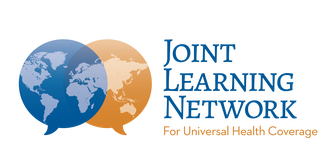Addressing the Noncommunicable Diseases Burden through Increased Access to Primary Health Care
Each year, approximately 41 million deaths or 71% of all deaths globally can be attributed to noncommunicable diseases (NCDs), with three quarters of global NCD deaths occurring in low- and middle-income countries (LMICs). The epidemiological and demographic transitions that LMICs are facing is resulting in higher incidence of NCDs and more resources being consumed by chronic conditions. Policymakers must realign and prioritize health services according to countries’ needs to include patient-centered quality care and preventive care for NCDs. While COVID-19 has overshadowed other priorities, it is imperative that essential primary health care (PHC) services for communicable and noncommunicable diseases continue to be delivered to avoid a rise in morbidity and mortality in the future.
On August 19, the Joint Learning Network’s Primary Health Care Financing and Payment Collaborative facilitated a virtual discussion addressing the NCDs burden through increasing access to PHC services. Representatives from Vietnam and Malaysia discussed their experiences and lessons learned developing and implementing new service delivery models and payment for NCD services at the PHC level. Several key lessons emerged:
- The use of local evidence to prioritize public investment in NCDs
Malaysia’s and Vietnam’s burden of disease has shifted significantly – from communicable diseases and conditions affecting infant, child, and maternal mortality to an epidemiological profile dominated by NCDs. The Malaysia Health Systems Research (MHSR) report, a collaboration between the Government of Malaysia and Harvard University, and the National Health & Morbidity Survey provided compelling evidence of increasing prevalence of NCDs and under investment and/or misalignment of public health resources in controlling these diseases. MHSR stated two key strategic recommendations for service delivery and financing: enhanced PHC and voluntary health insurance, of which enhanced PHC has been implemented. - The need for a systems-based approach in addressing the burden of NCDs
Recognizing the severity of the NCD burden in the country, Vietnam’s National Strategy on Prevention and Control of NCDs in the period of 2015 – 2025 stressed that the prevention and control of NCDs is the responsibility of government at all levels, sectors, and individuals. As an example, Community Health Workers (CHWs) roles were expanded under this strategy to include promotion of healthy lifestyles, screening for and early detection of common NCDs, and referral, care, and follow-up. - The importance of integration at different service delivery levels
Both countries recognized the need for vertical programs to be integrated horizontally and using common platforms for monitoring health care providers, patients, and communities. Through its integrated care networks, Malaysia sought to improve referral and counter-referral mechanisms between primary health centers, secondary and tertiary public hospitals, as well as between public and private healthcare facilities. - Blended payment systems to incentivize NCD service provision at PHC level
Vietnam shared that their payment system had adverse incentives to under-provide NCD services at the PHC level, particularly preventive services, such as screening and counselling. By adding supplemental payments for NCDs, policymakers can incentivize better NCD case management. For example, using a combination of capitation and fee-for-service as a supplemental payment method can encourage provision of NCD services such as screening, prevention programs and health promotion.
As NCDs continue to become an increasing burden for all countries, themes emerging from the webinar highlight countries’ pragmatic approaches to enhance NCD service delivery and payment at the PHC level and provide important lessons for improvement of NCD service delivery models.
This post was written by Dr. Kamaliah Noh, Dr. Khuong Anh Tuan, Dr. Nor Idawaty Ibrahim, and Nivetha Kannan.
